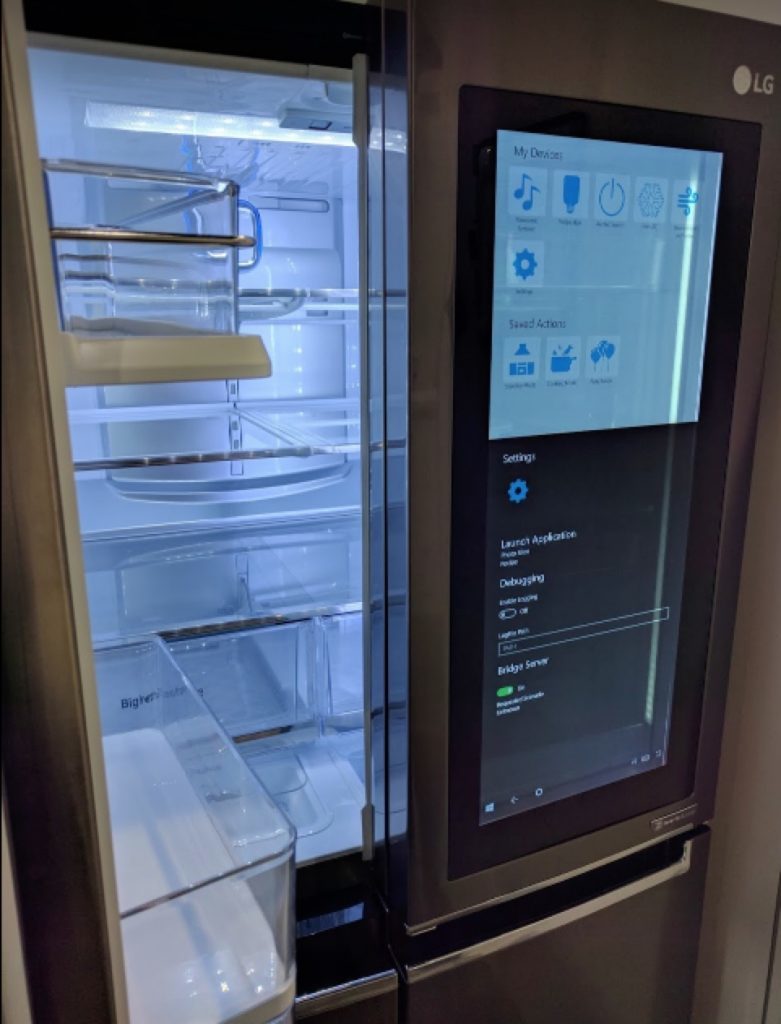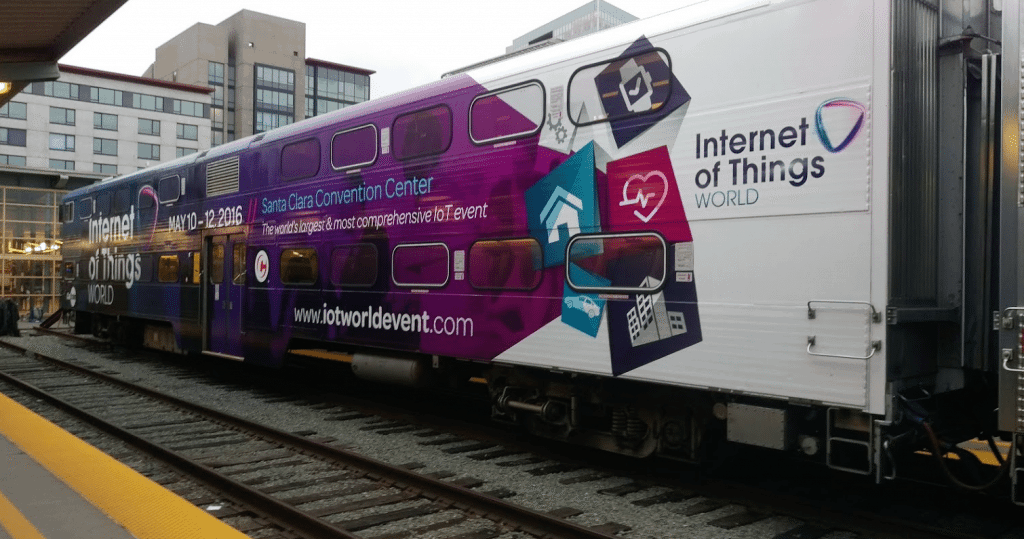The Internet of Things has always been more of an idea than an industry.
The idea: connect everything.
At its most simple, the concept of the Internet of Things is to put a sensor and a modem on everything and connect it to the cloud. At its most complex, those things employ a sophisticated system of sensors, modems, processors, operating systems, cloud integration, apps, displays, voice platforms and machine learning. Think of the difference between a simple Bluetooth beacon and LG’s new InstaView smart refrigerator.
To categorize all of these things under the umbrella of “the Internet of Things” is absurd. It is true that most connected things share some common traits. The hardware and software are outgrowths of the mobile ecosystem, which was an evolution of the PC and Internet generation. Internet of Things objects are not redefining the notion of compute … they are just adding a whole lot more surface area and complexity.
As the Internet of Things loses definition from a conceptual level, what has it become? The connected world has a foot in just about every business, personal and governmental sector, to varying degrees of maturity.
The Open Connectivity Foundation is an open source industry group that organizes and certifies connected gadgets and helps them communicate with each other through a communications product called IoTivity. The OCF is led by the likes of Intel, Qualcomm, Microsoft and Samsung and includes more than 320 corporate members. After several years of fairly public corporate bickering, the OCF is now the trade group for the connected gadgets sector.
“The most exciting thing is real product in the market this year,” said Gary Martz, product line director for IoT communications frameworks at Intel, in an interview with ARC at CES 2017 in Las Vegas. “Our certification program is up and running. Devices are being certified. You’ll see them on shelves later this year.”
Get ARC’s latest articles straight to your inbox, subscribe here!
Defining The Prime Sectors Of The Internet Of Things
Here is how the OCF organizes the different sectors that comprise the connected gadgets ecosystem:
Consumer: The types of gadgets that a consumer can find in a store. This categorization is vague as it could include everything from smart home gadgets like connected light bulbs or garage door openers, to TVs, speakers, vacuum cleaners or larger appliances. The consumer IoT market is defined largely by smart home devices.
Enterprise: Connected within the likes retail or office spaces. Bluetooth beacons and other wireless devices are gaining traction in this area.
Industrial: In terms of potential revenue and savings, the tech industry looks at the industrial sector as by far the biggest opportunity for Internet of Things-related devices. The likes of GE Digital, Bosch and Hitachi are the biggest players in the Industrial Internet of Things.
Automotive: Some of the most fascinating work in connected devices is currently happening in cars. The car itself can be deemed a connected device. But a car is made up of any variety of devices that can connect to the Internet from displays to speakers to in-car diagnostics.
Health: The health and medical sector sees great potential in connected devices, from wearable devices to those embedded straight into the body, to more communicative and efficient devices in hospitals and doctor’s offices.
Education: In many ways, connected devices in the education sector are an offshoot of those found in the consumer and enterprise realms. And yet, the perpetually underfunded education ecosystem faces significant challenges towards adoption.
“We are seeing an explosion,” said Martz. “Because IoT, the compute, is being put into devices we have never even imagined. From compute to communications, there is an explosion.”
Assessing The Maturity Of The Connected Gadgets Ecosystem
In a very broad sense, the technology industry has been talking about the Internet of Things since the late 1990s. On a more tangible level, the Internet of Things has been in the technological discourse since about 2007. It took the mobile revolution to really jumpstart actual connected gadgets to the scene and it wasn’t until maybe 2013 or so when the Internet of Things became “real.”
“Every single one of those vertical profiles, there is a tremendous amount of work to be done,” said Martz. “There is always going to be work to optimize these different verticals and different solutions and different innovations.”
So, we’ve seen about half a decade of development in connected gadgets. Which sectors are mature and which are the laggards of the industry?
In order of maturity, the hierarchy goes:
- Consumer/connected home
- Industrial/infrastructure
- Automotive/connected cars
- Enterprise
- Health/fitness/medical
- Education/government
“The low hanging fruit and the one where we started … was smart home. That is where you are seeing that is most advanced, most mature,” said Martz.
Indeed. If you take the annual Consumer Electronics Show in Las Vegas as a barometer, the smart home is far and away the most prominent category in the Internet of Things. Examples abound, from the Chamberlain garage door opener to Philips Hue lighting. Amazon’s Alexa and other voice platforms are coming to unify the experience throughout the smart home.

The LG InstaView fridge at CES 2017.
On the other end of the spectrum, the health and medical sector face challenges that are intrinsic to the industry. The movement of data (the life blood of any technology) is highly regulated by HIPAA. Security is of the utmost concern. The adoption of new technology tends to lag in the medical field and the Internet of Things is no exception.
“As you can imagine in health, security is a huge concern,” said Martz. “It is a concern for all verticals, but health is very sensitive around security.”
The Massive Potential Of The Industrial Internet Of Things
From a maturity level, consumer connected devices are ahead. But the behemoths of industry see the industrial Internet of Things as having much, much more economic impact.
“For the man in the street, the idea of the Internet of Things is my fridge talking to my milk bottle or whatever,” said Hitachi Insight Group vice president Greg Kinsey, in an interview with ARC in 2016. “In industry, we have looked at a number of studies and we have done some on our own … the sheer size of the IoT market in the heavy industries and manufacturing supply chain etc. is clearly much larger than the consumer space for the foreseeable future.”
Oddly enough, less than a year after Kinsey made that statement, LG announced its fridge that can specifically read the expiration date of a bottle of milk.
GE Digital puts a number on that economic impact and investment:
$60 trillion by 2030.

“If we do it right, we can change the world. Literally,” said Vish Soaji, GE Digital’s head of engineering for industrial IoT applications, in an interview with ARC at its campus in San Ramon in 2016.
And yet, the industrial sector tends to move more slowly. Manufacturing does not slow down. Incorporating new technology into industrial systems is like trying to change the engine of an airplane while it is still in the air.
“Industrial is also efficiency and utilization. They don’t like change,” said Martz. “It is very slow to move because you’ve got to keep the lines going. You’ve got to work with the key technology providers in this space. The standards groups are already there. It is where the most money is but it is also where they are most conservative.”
Did you know? Applause can perform market research for Internet of Things device and ensure top quality digital experiences through crowd-based testing. See what Applause can do for the Internet of Things here.